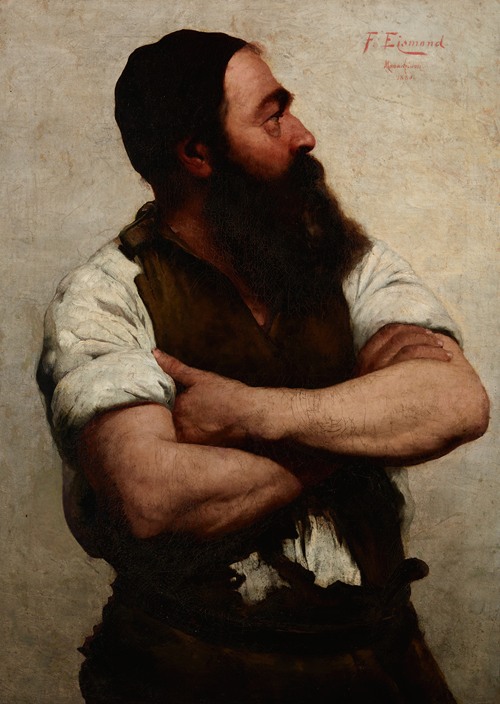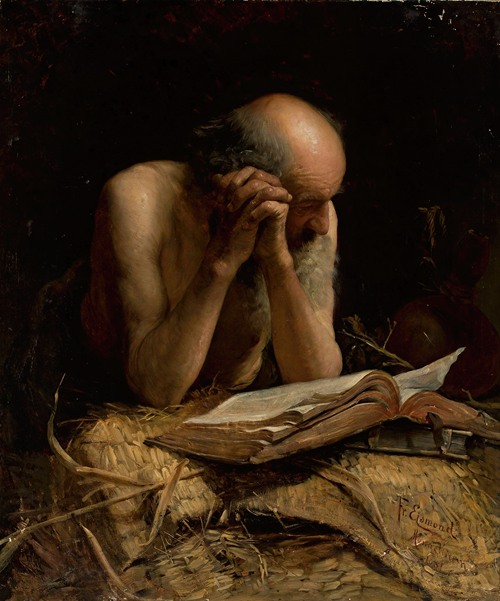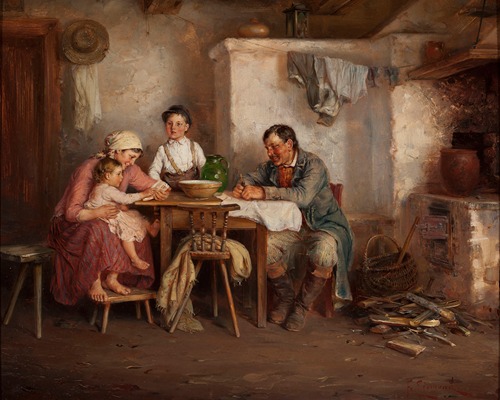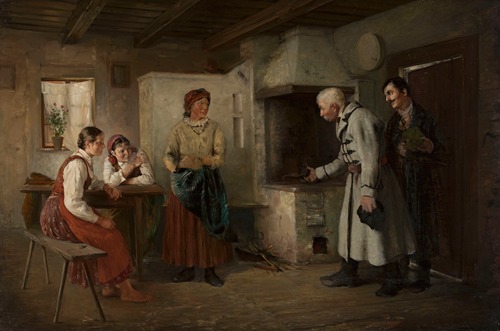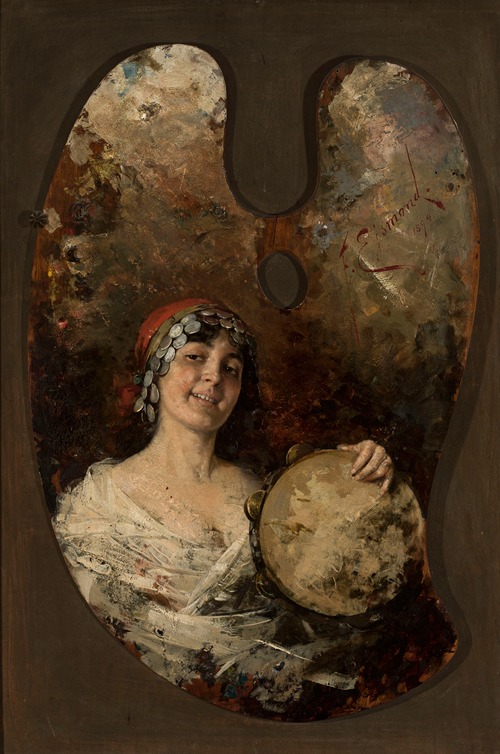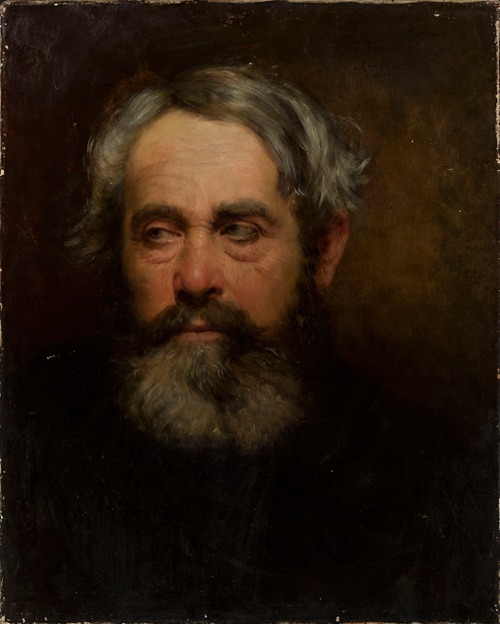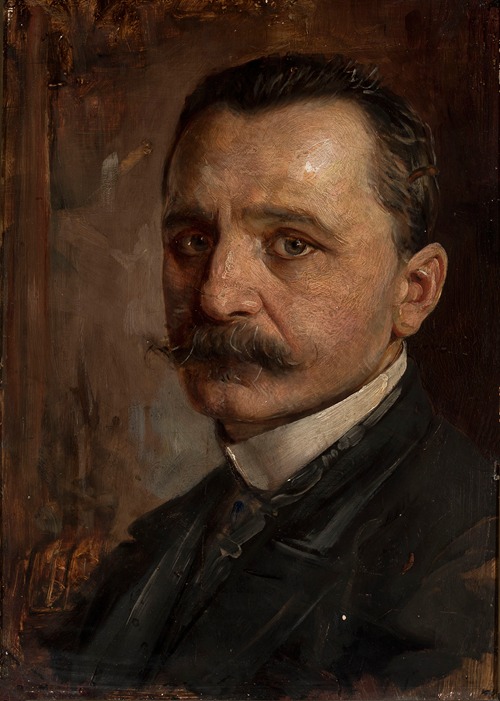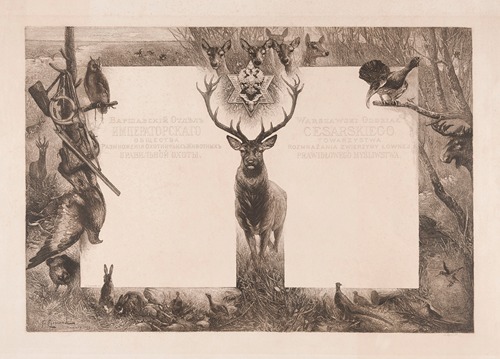

Franciszek Ejsmond
Franciszek Teodor Ejsmond was a Polish painter.
He was born on March 29, 1859, in Goździe near Radom, as the son of Aleksander (1834-1891) and Karolina née Grudzińska (1841-1864). He was probably named after his great-grandfather, Franciszek Lizanowicz. After his mother's death, the family moved to the Krogulcza Mokra estate, which was purchased by brothers Piotr and Aleksander Ejsmond. He spent his childhood there.
He studied at the Academy of Fine Arts in Warsaw, and then (1879-1886) at the Academy in Munich (at the end of October 1879, he enrolled at the Academy of Fine Arts - Naturklasse). There, he studied under Gyula Benczúr and Antonin Wagner. He became friends with Julian Fałat and Józef Brandt. He enjoyed considerable recognition and international fame. He returned to Poland in 1897. He was the director of the Society for the Encouragement of Fine Arts in Warsaw. In 1913–1918, he was the president of the Polish Artistic Society.
He drew on Dutch and Munich painting, remaining on the sidelines of the development of modern painting. He painted idealized and sentimental genre scenes from the life of patriarchal peasant families with children (Miłość macierzyńska [Motherly Love], 1887). As a keen hunter, he painted hunting scenes, as well as Eastern motifs, portraits (Portrait of an Old Man with a Beard, 1881), still lifes, landscapes, and religious paintings.
He had many siblings—his father had 15 children from three marriages. He married Maria Wieniawska, daughter of the well-known writer Julian Wieniawski (pseudonym Jordan). He had two sons: Julian, a writer, and Stanisław, a painter.
He is buried in the family tomb at the Powązki Cemetery in Warsaw (plot 194–I–16/17).
